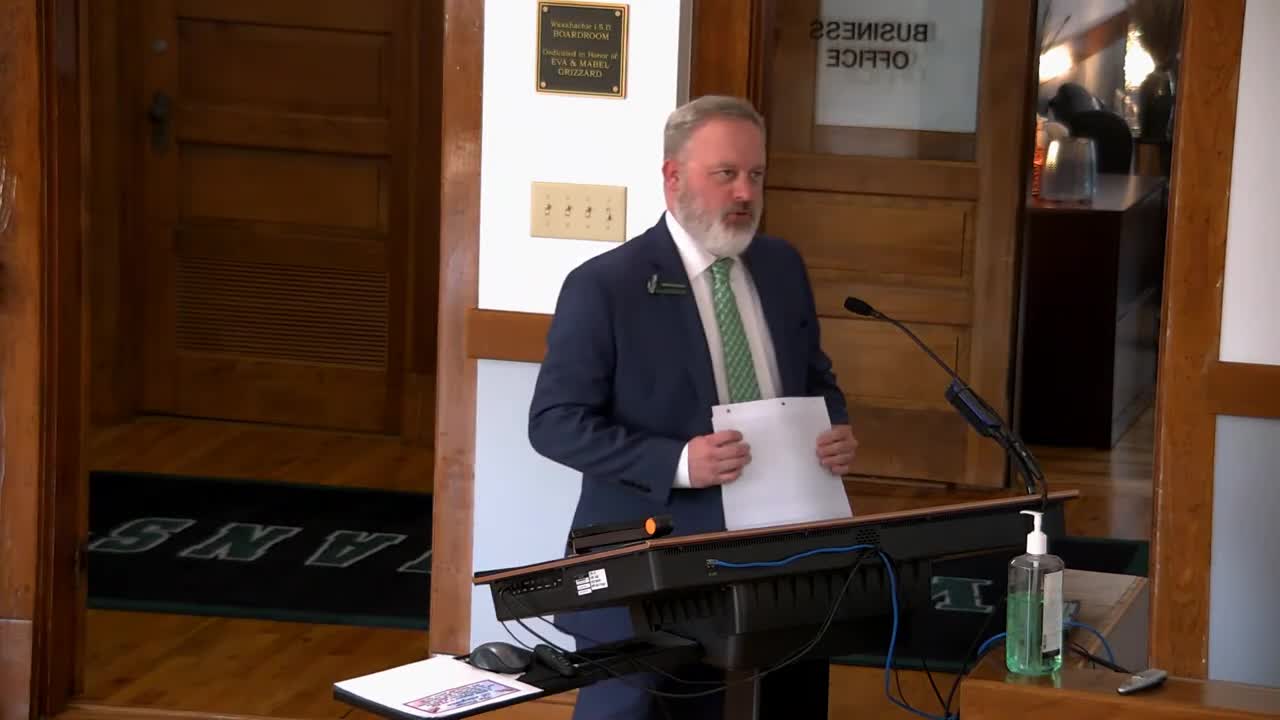School District Faces Budget Crisis Amid State Funding Cuts
March 19, 2024 | WAXAHACHIE ISD, School Districts, Texas

This article was created by AI summarizing key points discussed. AI makes mistakes, so for full details and context, please refer to the video of the full meeting. Please report any errors so we can fix them. Report an error »

In a recent government meeting, school district officials discussed the current financial status and future budget priorities. The agenda included updates on fund balance, state funding, and budget mechanics for the upcoming year.
The district has made significant progress in building its fund balance, which is crucial for maintaining operations during lean cash flow periods. Last year, the district added approximately $5 million to its fund balance, exceeding the initial goal of $3 million. Currently, the fund balance stands at about 25.1% of expenditures, equating to roughly three months of operating costs. This financial cushion is vital for ensuring flexibility in case of delays in state payments.
However, challenges loom on the horizon. A recent audit by the federal government has led to a reduction in Medicaid reimbursements for services provided to eligible students, potentially costing the district around $1.5 million. Additionally, the passage of Senate Bill 12, which adjusts tax rates for certain homeowners, could further impact state funding, leading to an estimated budget shortfall of about $4.4 million.
The district is also facing pressures from rising operational costs, particularly in transportation and technology. The price of diesel fuel has increased, and the need for device replacements in the one-to-one technology initiative is becoming more pressing. As a result, officials are considering various budget tiers to prioritize essential expenditures while maintaining the fund balance.
The board emphasized the importance of maintaining a minimum fund balance of 90 days, with discussions around potentially not filling vacant positions to help manage costs. The overall sentiment was one of caution, with a focus on ensuring that any budget cuts do not adversely affect student services, particularly mental health programs.
As the district prepares for the next fiscal year, officials are committed to closely monitoring expenditures and revenues to present a balanced budget. They are also exploring ways to advocate for increased state funding, as many districts across Texas are facing similar financial challenges. The meeting concluded with a call for continued vigilance and strategic planning to navigate the uncertain financial landscape ahead.
The district has made significant progress in building its fund balance, which is crucial for maintaining operations during lean cash flow periods. Last year, the district added approximately $5 million to its fund balance, exceeding the initial goal of $3 million. Currently, the fund balance stands at about 25.1% of expenditures, equating to roughly three months of operating costs. This financial cushion is vital for ensuring flexibility in case of delays in state payments.
However, challenges loom on the horizon. A recent audit by the federal government has led to a reduction in Medicaid reimbursements for services provided to eligible students, potentially costing the district around $1.5 million. Additionally, the passage of Senate Bill 12, which adjusts tax rates for certain homeowners, could further impact state funding, leading to an estimated budget shortfall of about $4.4 million.
The district is also facing pressures from rising operational costs, particularly in transportation and technology. The price of diesel fuel has increased, and the need for device replacements in the one-to-one technology initiative is becoming more pressing. As a result, officials are considering various budget tiers to prioritize essential expenditures while maintaining the fund balance.
The board emphasized the importance of maintaining a minimum fund balance of 90 days, with discussions around potentially not filling vacant positions to help manage costs. The overall sentiment was one of caution, with a focus on ensuring that any budget cuts do not adversely affect student services, particularly mental health programs.
As the district prepares for the next fiscal year, officials are committed to closely monitoring expenditures and revenues to present a balanced budget. They are also exploring ways to advocate for increased state funding, as many districts across Texas are facing similar financial challenges. The meeting concluded with a call for continued vigilance and strategic planning to navigate the uncertain financial landscape ahead.
View full meeting
This article is based on a recent meeting—watch the full video and explore the complete transcript for deeper insights into the discussion.
View full meeting
